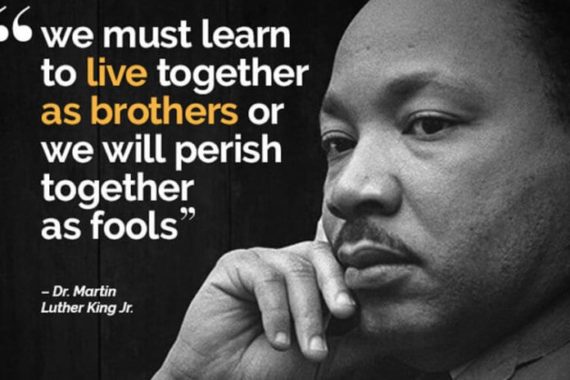
(1-18-21) How racially diverse are the nation’s two largest, grassroots mental health organizations?
It seems an appropriate question to ask on Martin Luther King Jr. day.
So I decided to do a cursory review of upper management and the boards of directors at the National Alliance on Mental Illness and Mental Health America.
Mental illnesses don’t discriminate and inclusion doesn’t happen by chance. It must be deliberate.
NAMI
The National Alliance on Mental Illness is headed by Daniel H. Gillson Jr. who is its first African American President and CEO. Counting him, there are a total of five males and nine women on NAMI’s Senior Leadership team. Six of those 14 members are from racial minorities.* Among them is Mónica L. Villalta, who is NAMI’s National Director of Inclusion and Diversity Officer.
NAMI has an elected 16 member board of directors. It includes six members from racial minority groups. The male/female breakdown is 10 women and 6 men.
In a press release issued last May, Gillson wrote that “racism is a public health crisis.”
“As the nation’s largest grassroots mental health organization, it is our responsibility to serve all. While as an organization we are still early in our intentional Diversity, Equity and Inclusion journey and have much to do, we have renewed our commitment to our values. We continue to strive to deliver help and hope to all who need it.
Gillson added:
“The effect of racism and racial trauma on mental health is real and cannot be ignored. The disparity in access to mental health care in communities of color cannot be ignored. The inequality and lack of cultural competency in mental health treatment cannot be ignored.
“Our nation’s African American community is going through an extremely painful experience, pain that has been inflicted upon this community repeatedly throughout history and is magnified by mass media and repeated deaths. We stand with all the families, friends and communities who have lost loved ones senselessly due to racism. And, with more than 100,000 lives lost to the coronavirus pandemic – disproportionately from minority communities – these recent deaths add gasoline to the fire of injustice.
As part of that press release, NAMI listed resources specifically intended to help minorities. You can read them here.
Mental Health America.
On its website, it lists 34 staff members, composed of 25 women and 9 men. Of those 34 employees, 10 are members of a racial minority.
Jennifer Cheang, who listed herself as being Puerto Rican and Chinese noted last August on in an MHA article about how multicultural individuals are more prone to disorders.
“At MHAScreening.org, we know that among Black, Indigenous, and People of Color (BIPOC) that take a mental health screen, people who identified themselves as multiracial were the most likely to screen positive or at-risk for alcohol/substance use disorders, anxiety, depression, eating disorders, and psychosis.
There’s research that shows that multiracial people have more behavioral health problems than their monoracial counterparts. They face unique stressors, and often find that it is difficult to connect with others – even with other multiracial people. More often than not, the parents of multiracial people will not necessarily understand their struggles. Even among multiracial people, their experiences are so unique that talking with other multiracial people can feel disjointed, and there can be a failure to connect.”
MHA’s Board of Directors has 19 members, including 9 men and 10 women. It’s board includes 9 members who are minorities.
White Americans are the racial majority. Hispanic and Latino Americans are the largest ethnic minority, comprising an estimated 18% of the population. African Americans are the second largest racial minority, comprising an estimated 13.4% of the population.
Of course, equality doesn’t equal equity, as the Annie E. Casey Foundation and others have pointed out.
Are NAMI and MHA doing a good job in listening to minorities? How does your local NAMI or MHA chapter compare? Are your local leaders working to ensure that minority voices are heard and different cultural backgrounds are considered?
It’s an important question to ask today.
*Many organizations list board members and staff who self identify as minorities. The numbers in this blog may not include everyone who lists themselves in a racial minority category.



